How to Tell If Gold Coins Are Real: Top Expert Tips
Want to ensure your gold coins are real? This article explains simple yet effective methods on how to tell if gold coins are real and verify their authenticity. You’ll learn about visual checks, weight measurements, the ping test, and other...

Want to ensure your gold coins are real? This article explains simple yet effective methods on how to tell if gold coins are real and verify their authenticity. You’ll learn about visual checks, weight measurements, the ping test, and other reliable techniques.
Key Takeaways
-
Authenticating gold coins requires multiple methods, such as examining hallmarks, weight, and sound tests, to ensure reliability.
-
Visual inspections using magnifying tools and tests like the nitric acid test can further confirm a coin’s authenticity by revealing underlying properties.
-
Purchasing from reputable dealers and consulting professionals are essential steps to mitigate the risk of acquiring counterfeit gold coins.
Understanding Gold Coin Hallmarks

Hallmarks on gold coins are key indicators of their authenticity and value. These tiny and intricate markings act as a coin’s fingerprint, revealing its purity and gold content. For example, hallmark numbers followed by ‘K’ or percentages like ‘417’ for 10-karat gold indicate the gold quality.
Commonly, you’ll find markings such as ‘GP’ or ‘GE’, signifying gold-plated items, while ‘GF’ denotes gold-filled jewelry, which has a higher gold content than mere plating. Another interesting mark is a ‘P’ after a karat marking, indicating that the gold piece is plumb, meaning it has exact purity. Federal law allows a deviation of 0.5 karats from the specified marking, a factor to consider when evaluating purity.
However, hallmarks are not foolproof. Counterfeiters often replicate these stamps and engrave fake purity levels, which can mislead even experienced collectors. Thus, while hallmarks provide crucial information, relying solely on them isn’t advisable.
Examining Weight and Dimensions
Checking the weight and dimensions of gold coins against known standards is a reliable method for verifying authenticity. Genuine gold coins have specific weight and size characteristics. These standards are defined by the minting authority. For example, the standard dimensions for a 1oz Krugerrand are 32.77mm in diameter and 2.84mm in thickness.
Precise tools like calipers and scales are crucial for this task. Calipers provide accurate measurements of the coin’s dimensions, while a precise scale ensures the exact weight is obtained. Genuine gold coins are dense, making them difficult for counterfeiters to replicate accurately, often resulting in significant differences in weight and size.
If your gold coin weighs more than a counterfeit coin of the same dimensions, it’s likely genuine. Conversely, counterfeit coins that match the weight of genuine ones tend to be larger, indicating potential fakes. This method, combined with others, bolsters your confidence in the gold coin’s authenticity.
The Ping Test for Gold Coins

The ping test is a simple yet effective method to check gold coins at home for authenticity. When struck, authentic gold coins produce a distinct, high-pitched ringing sound. Place the coin on your finger and tap it with a small stick or another coin to perform the test.
Alternatively, you can strike the gold coin in the pit of your finger with another metal to hear the sound. While the ping test can provide a general indication of authenticity, it’s not highly reliable on its own and should be complemented with other methods.
Using Magnets to Test Gold Coins

The magnet test is a quick and straightforward method for assessing gold coin authenticity. Gold is not magnetic, so if a gold coin is attracted to a magnet, it suggests the presence of other metals. This is a clear indication that the coin might be fake.
For reliable results, use a strong neodymium magnet when performing this test. Simply bring the magnet close to the coin and observe any attraction. If the coin sticks to the magnet, it’s likely not genuine gold. However, this test alone isn’t conclusive and should be used in conjunction with other methods.
Combining the magnet test with other techniques, such as the ping test or weight measurement, enhances the accuracy of your assessment. This multi-faceted approach ensures you can spot fake gold coins with greater confidence.
Conducting the Nitric Acid Test
The nitric acid test is a reliable method for determining if gold is pure, as the acid does not affect genuine gold. To perform this test, you’ll need a gold test kit or nitric acid test kit. Apply a drop of nitric acid to a small scratch on the coin. If the gold is mixed with other metals, it may react, changing color or dissolving. If the acid turns green, it indicates the presence of zinc. This suggests that the coin may be gold-plated zinc. If the substance dissolves, it indicates that the item is not pure gold.
Handle nitric acid with care due to its corrosive properties. Always use proper safety gear and follow instructions carefully to avoid injury. While this test is highly accurate, it does carry a risk of damaging the coin if it’s mixed with other metals.
Visual Inspection with a Magnifying Glass
A magnifying glass enables a detailed examination of gold coins, crucial for identifying subtle signs of authenticity or counterfeiting. Inspect the coin carefully for discolorations or wear marks, which may indicate that the gold item is not genuine.
Look for engravings that indicate the fineness levels, Assayer’s number, and hallmarking center’s mark, as these features suggest authenticity. If the hallmarks on a gold coin appear excessively flawless, they may be false, raising suspicion of counterfeiting.
Visual inspection is a crucial step in the authentication process, revealing details that other methods might miss. It’s a straightforward yet powerful tool against counterfeit coins.
Performing the Ceramic Scratch Test
The ceramic scratch test is a simple method to check for counterfeit gold coins. Use an unglazed ceramic plate or tile and gently drag the coin across the surface.
A genuine gold coin will create a gold streak on ceramic surfaces, indicating its authenticity. If the streak is yellow, the coin is genuine. This test is simple and effective for quick verification of your gold coins.
The Skin Test for Gold Purity

The skin test assesses gold authenticity by checking for skin discoloration. Hold the gold coin against your skin for a few minutes. Real gold does not react with skin, while fake gold often contains alloys that can leave black or green stains.
A black mark on the skin is often seen as a sign that the gold is authentic. This test is simple and quick, providing an additional layer of verification for your gold coins.
The Float Test for Gold Coins
The float test helps determine if a gold coin is genuine since real gold coins sink in water due to their high density. Fill a bowl with water and gently place the coin on the surface. If the coin floats or descends slowly, it may not be genuine.
While the float test provides useful insight, it is not foolproof because fake gold coins may contain other metals that sink. Nonetheless, it’s a quick and easy test to perform at home.
Vinegar Test for Authenticity
The vinegar test is a straightforward method to check gold authenticity using white vinegar. Dip the gold coin in vinegar for about 5-8 minutes. A genuine gold item won’t change in appearance or color.
If the gold changes color or starts to peel when exposed to vinegar, the piece is not real gold. This test offers a simple way to distinguish between real and fake gold coins. Remember, gold is real.
Consulting Professional Gold Appraisers

Hiring professional appraisers guarantees the verification of gold coins. If you have doubts about a coin’s authenticity, consult a professional. A coin dealer or grading service can provide the necessary expertise, though be prepared to pay a fee for their services.
A professional appraisal ensures the authenticity and purity of the gold item. Additionally, a detailed appraisal document serves as proof of authenticity, which is important for insurance or resale purposes.
Using Advanced Gold Testing Machines
Advanced tools like the GoldScreenSensor and MagneticScreenScale can detect professionally forged coins made from alternative metals. The Sigma Metalytics Verifier utilizes electromagnetic waves to assess the main body of the metal, disregarding surface features. This device offers results within seconds and is user-friendly, making it accessible for anyone.
The Sigma Metalytics Verifier can test the purity of not just gold bars but also silver, platinum, palladium, and precious metal. It can authenticate coins and bars through protective plastic cases without needing to remove them.
Professional appraisers also use specific gravity tests and X-ray fluorescence scans for accurate analysis.
Buying from Reputable Dealers
Purchasing gold coins and gold bullion coins from established dealers reduces the risk of acquiring counterfeits. Choosing a reputable dealer ensures quality, as they typically provide detailed information about the coins, including weight, purity, and condition.
Positive customer reviews are crucial for assessing a gold coin dealer’s reputation. Transparency in pricing is a hallmark of trustworthy dealers, who are also likely to offer buyback options, enhancing their reliability.
Be cautious of red flags like high-pressure sales tactics and prices significantly lower than market value.
Global Coin: Trust You Can Count On
Before delving into the practical techniques for verifying the authenticity of gold coins, it’s essential to consider the broader value such knowledge brings to discerning investors and collectors. At Global Coin, authenticity is more than a promise; it’s the cornerstone of trust we build with our clients. As industry leaders with exclusive access to rare, high-value coins and a commitment to education, we empower collectors to make informed decisions with confidence. Understanding the methods to identify genuine gold coins not only safeguards your investment but also aligns with Global Coin’s mission to provide unmatched quality, integrity, and expertise in every transaction. This knowledge reinforces the exceptional value of owning coins from our carefully curated inventory—coins that are not only beautiful but also secure and enduring investments.
Summary
Summing up, verifying the authenticity of gold coins involves a combination of methods. From understanding hallmarks to consulting professional appraisers, each approach adds a layer of confidence. Ensuring your gold coins are genuine protects your investment and provides peace of mind.
By using these techniques, you can skillfully navigate the world of gold coin authentication. Remember, the key to spotting fake gold coins is thoroughness and vigilance. Happy collecting!
Frequently Asked Questions
Why is it important to check the authenticity of gold coins?
It is crucial to check the authenticity of gold coins to protect your financial investment from counterfeit risks and ensure you are acquiring genuine gold. Verifying authenticity safeguards your collection and investment value.
What are some common hallmark markings on gold coins?
Common hallmark markings on gold coins typically include numbers followed by 'K', such as '10K' for 10-karat gold, or percentages like '417'. Additionally, 'GP' or 'GE' indicates gold-plated items, while 'GF' signifies gold-filled jewelry.
How effective is the ping test in verifying gold coins?
The ping test is effective for indicating the authenticity of gold coins through their distinct sound, but it is best used in conjunction with additional verification methods for more reliable results.
What should I look for during a visual inspection with a magnifying glass?
During a visual inspection with a magnifying glass, focus on identifying discolorations, wear marks, and engravings that indicate fineness levels and hallmarking details. Be cautious of excessively flawless hallmarks, as they may indicate counterfeiting.
Why should I buy gold coins from reputable dealers?
Buying gold coins from reputable dealers minimizes the risk of counterfeit purchases and ensures you receive accurate information, transparency in pricing, and reliable buyback options. This protects your investment and provides peace of mind.
Related Articles
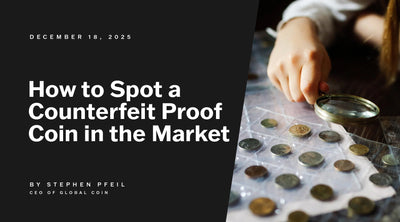
How to Spot a Counterfeit Proof Coin in the Market
How to Spot a Counterfeit Proof Coin in the Market In the world of numismatics, few things hold ...
Discover More
BREAKING NUMISMATIC NEWS: Large batch of 2025 Marine Privy Coins MELTED by U.S. Mint
BREAKING NUMISMATIC NEWS: Large batch of 2025 Marine Privy Coins MELTED by U.S. Mint A historic ...
Discover More
Tax Implications When You Sell Gold Bullion in Different States
Disclaimer: The following content is for informational purposes only and should not be construed ...
Discover More

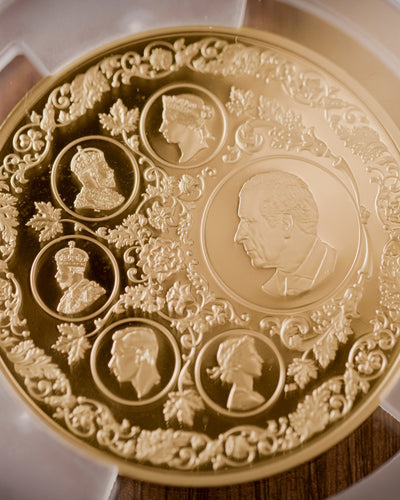
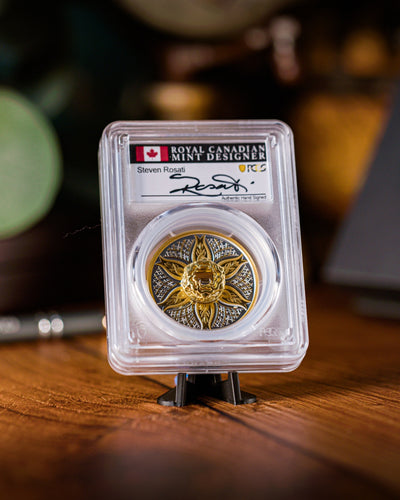
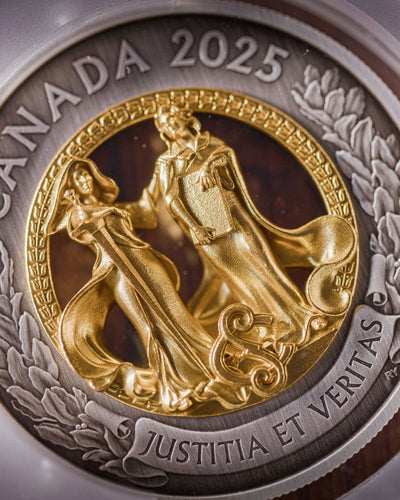
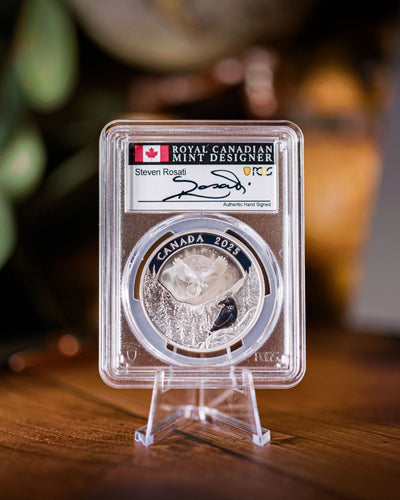
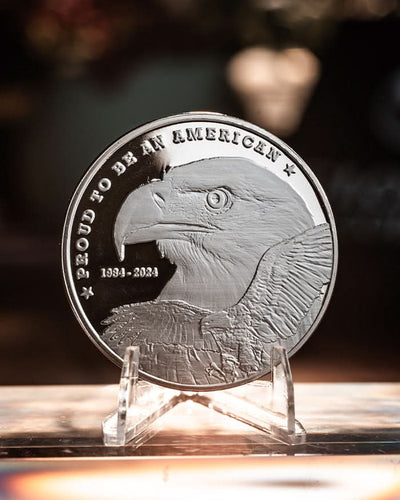
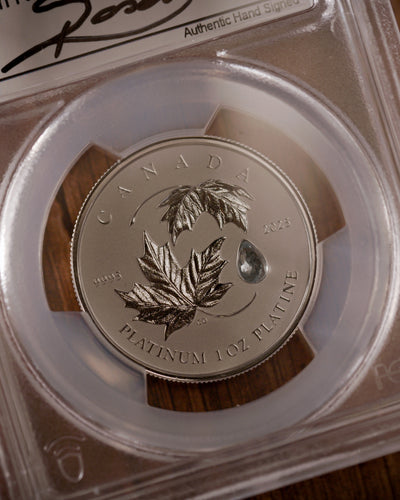
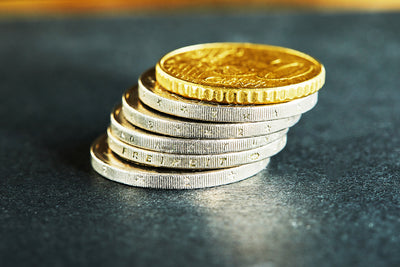
Leave a comment
This site is protected by hCaptcha and the hCaptcha Privacy Policy and Terms of Service apply.